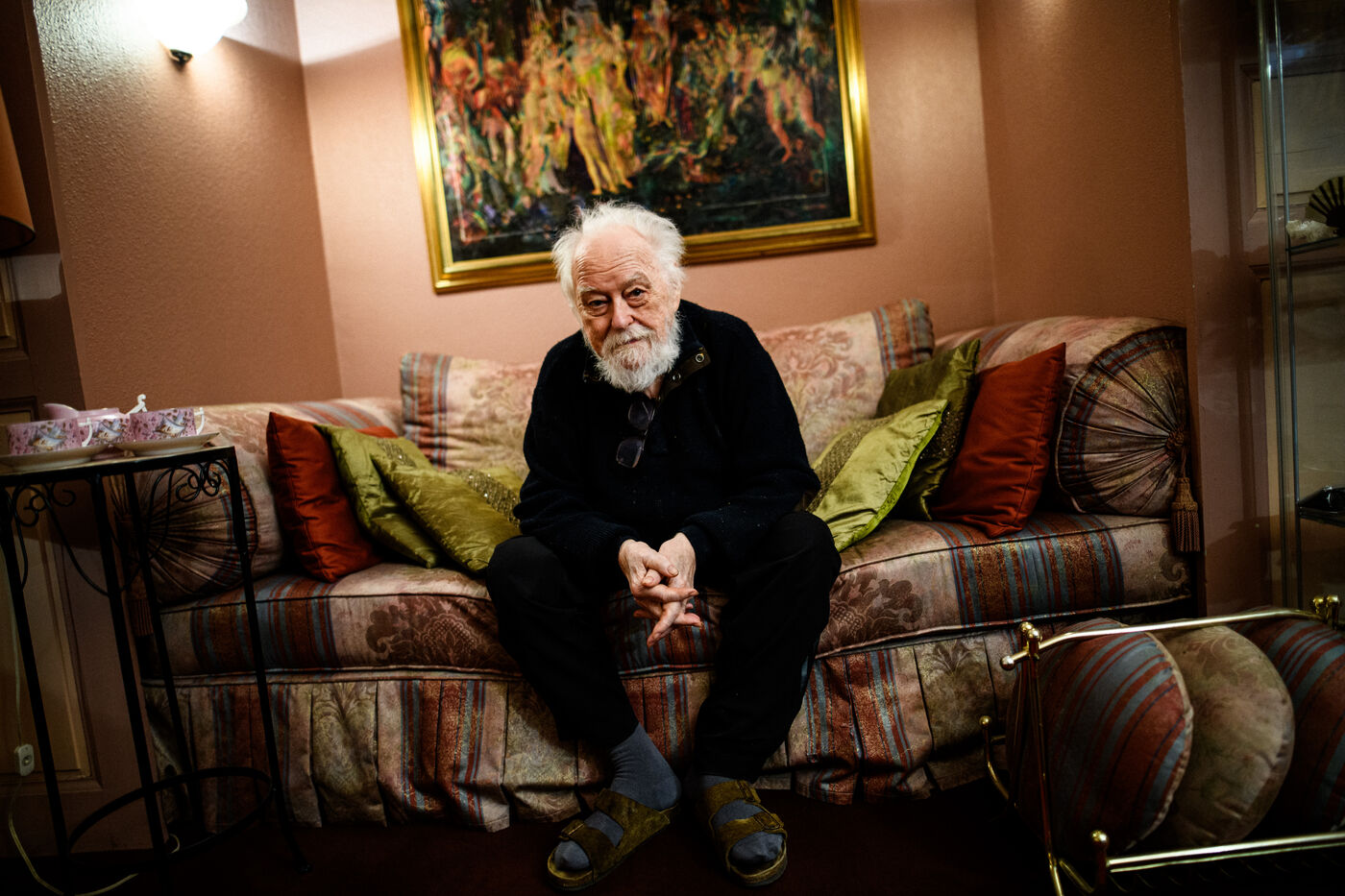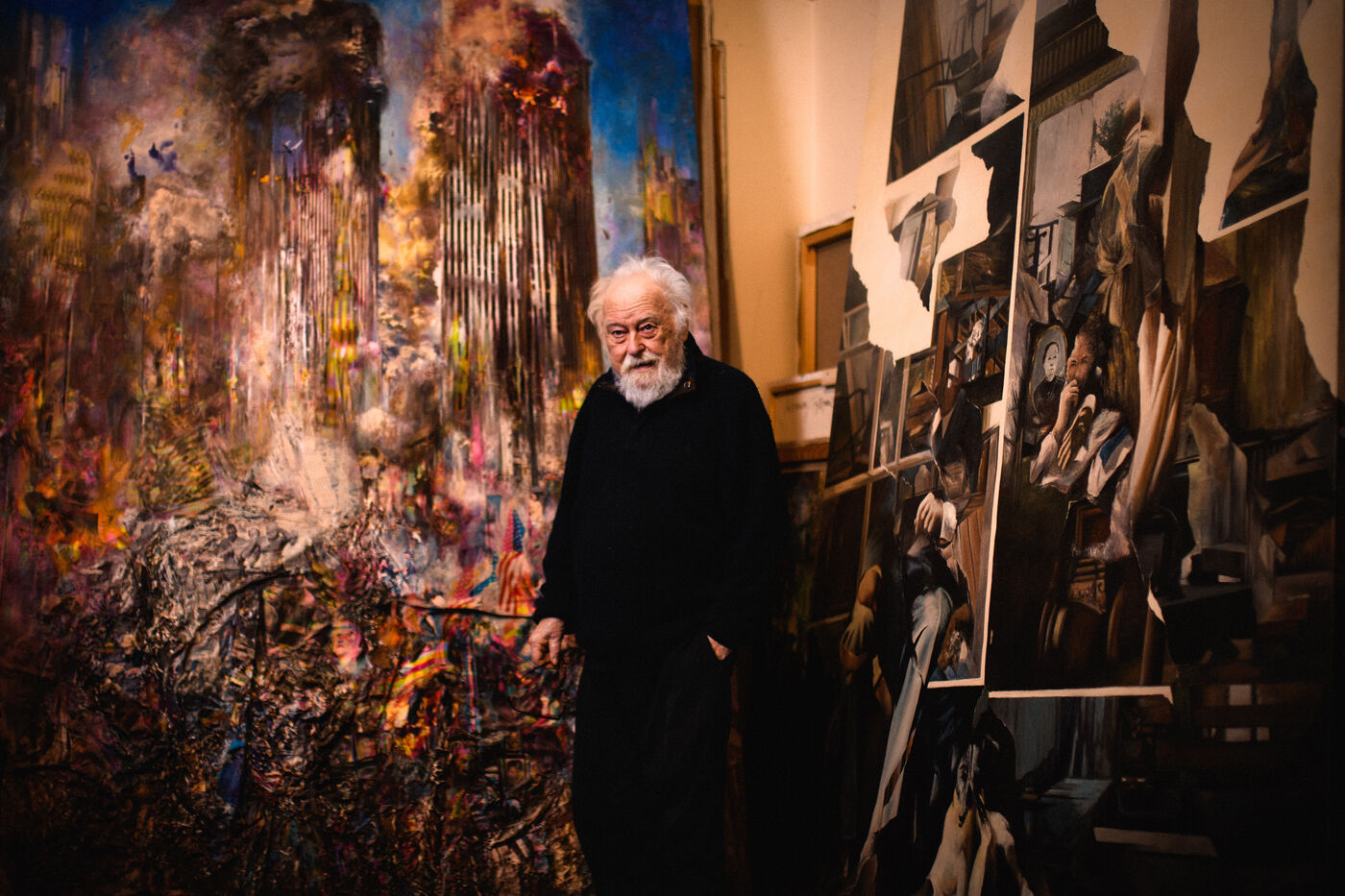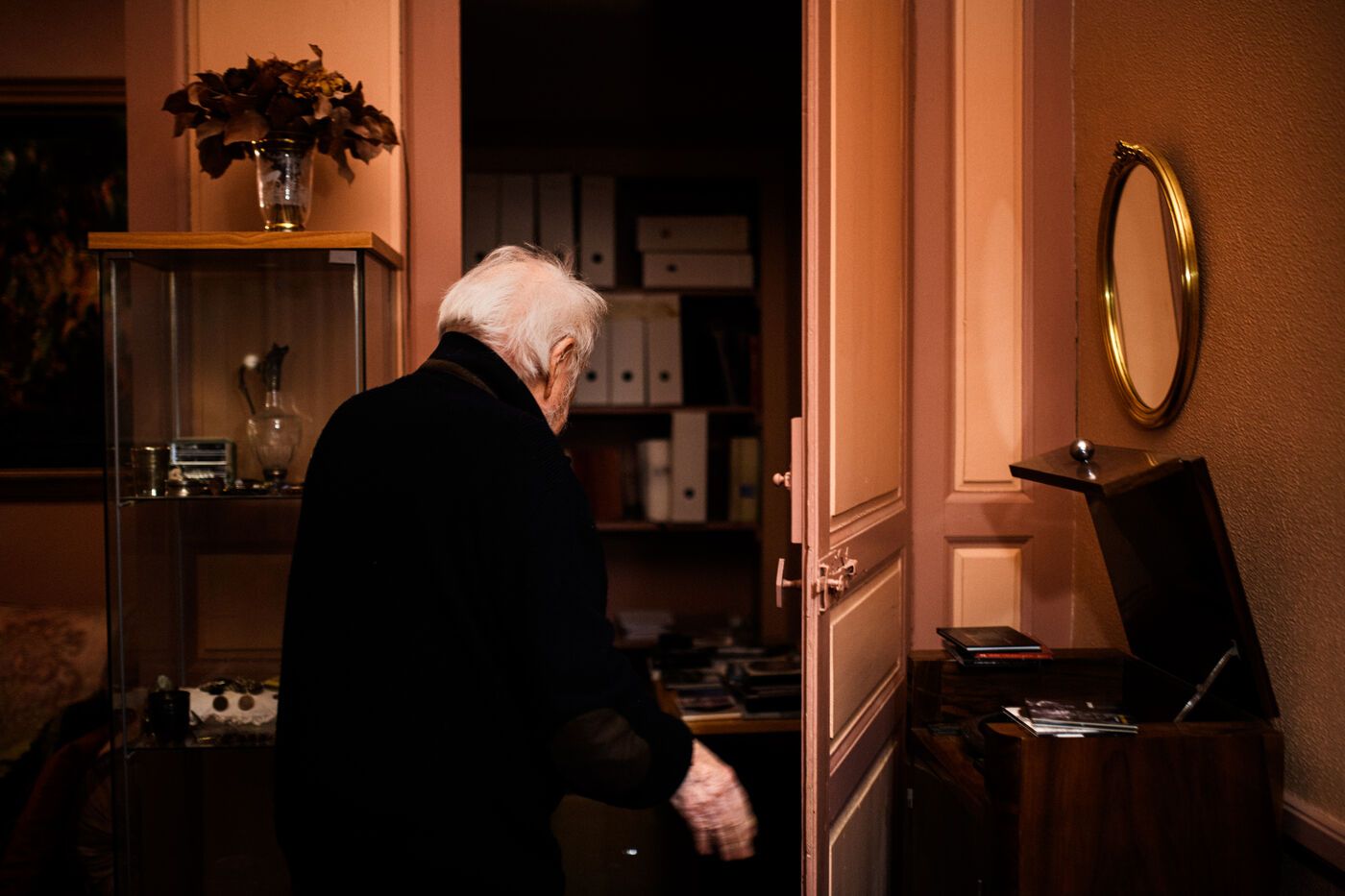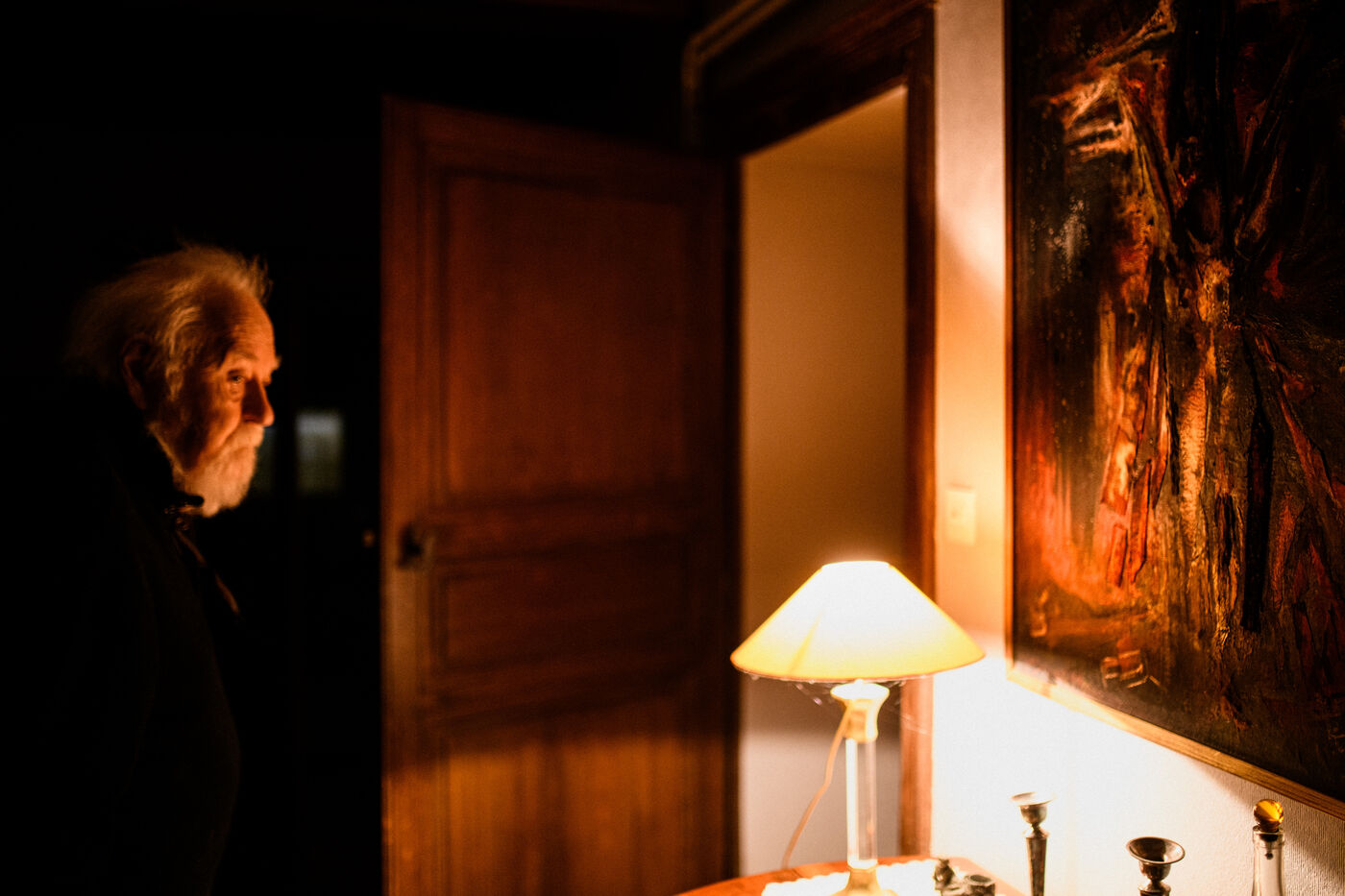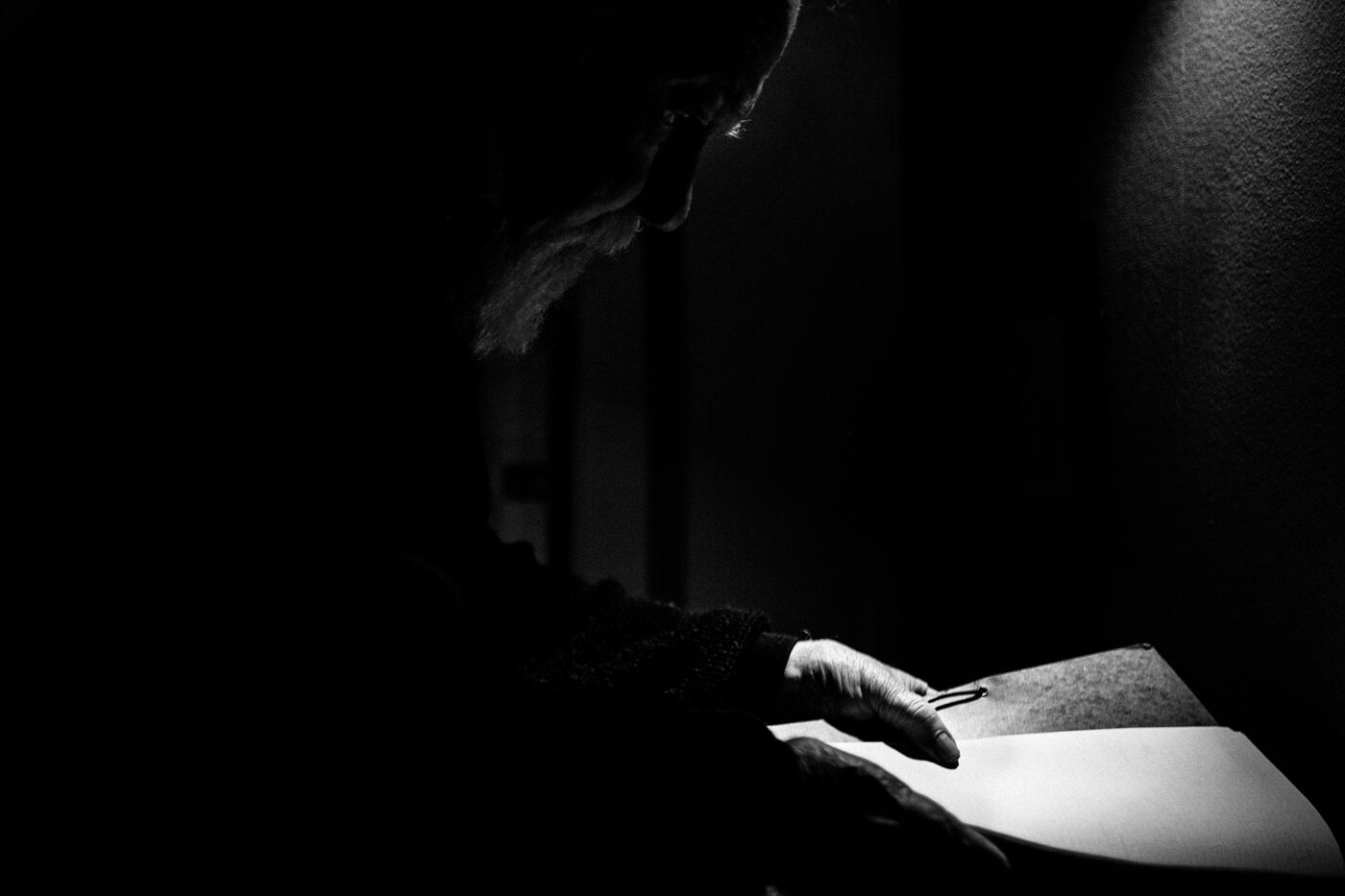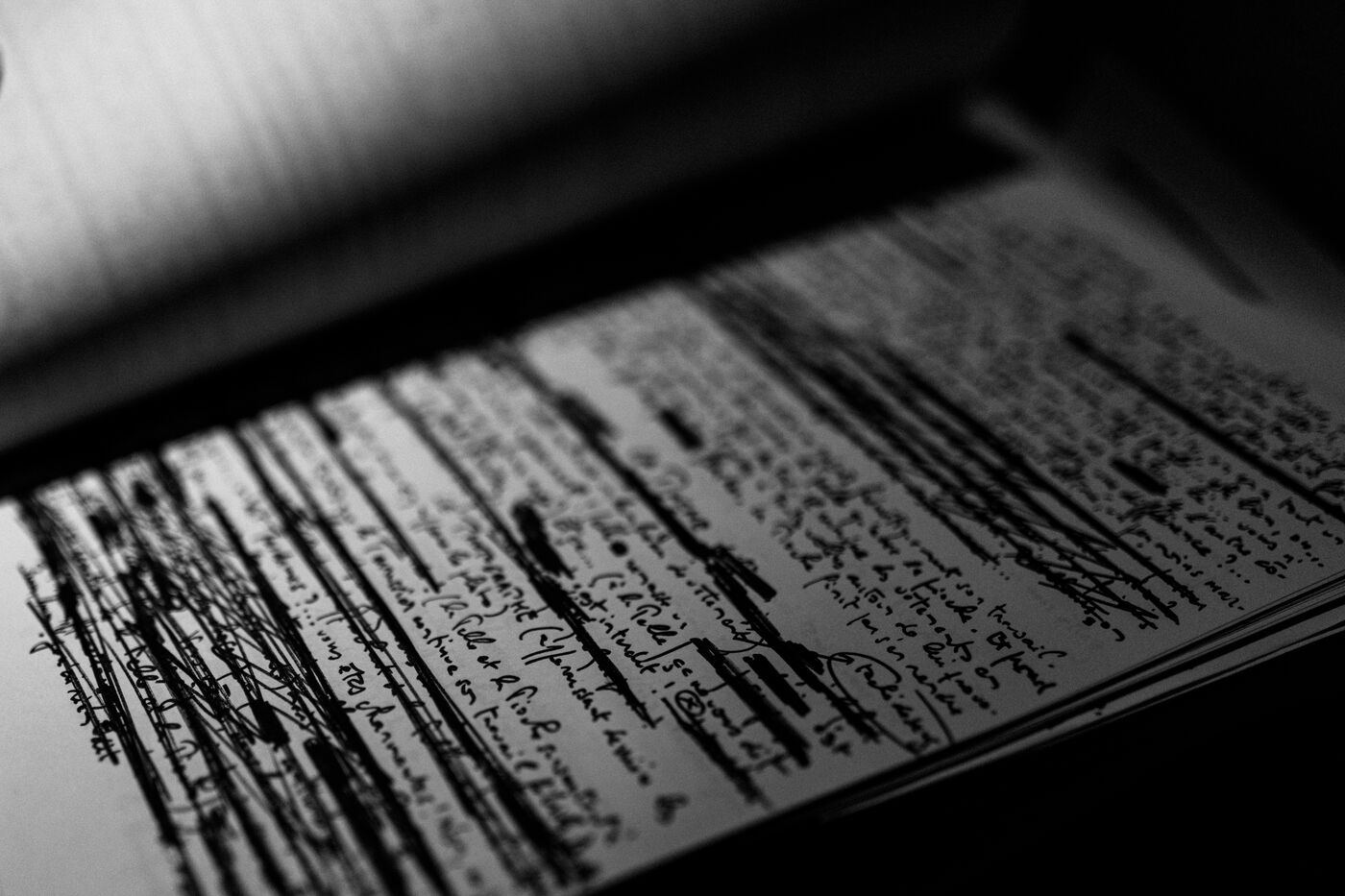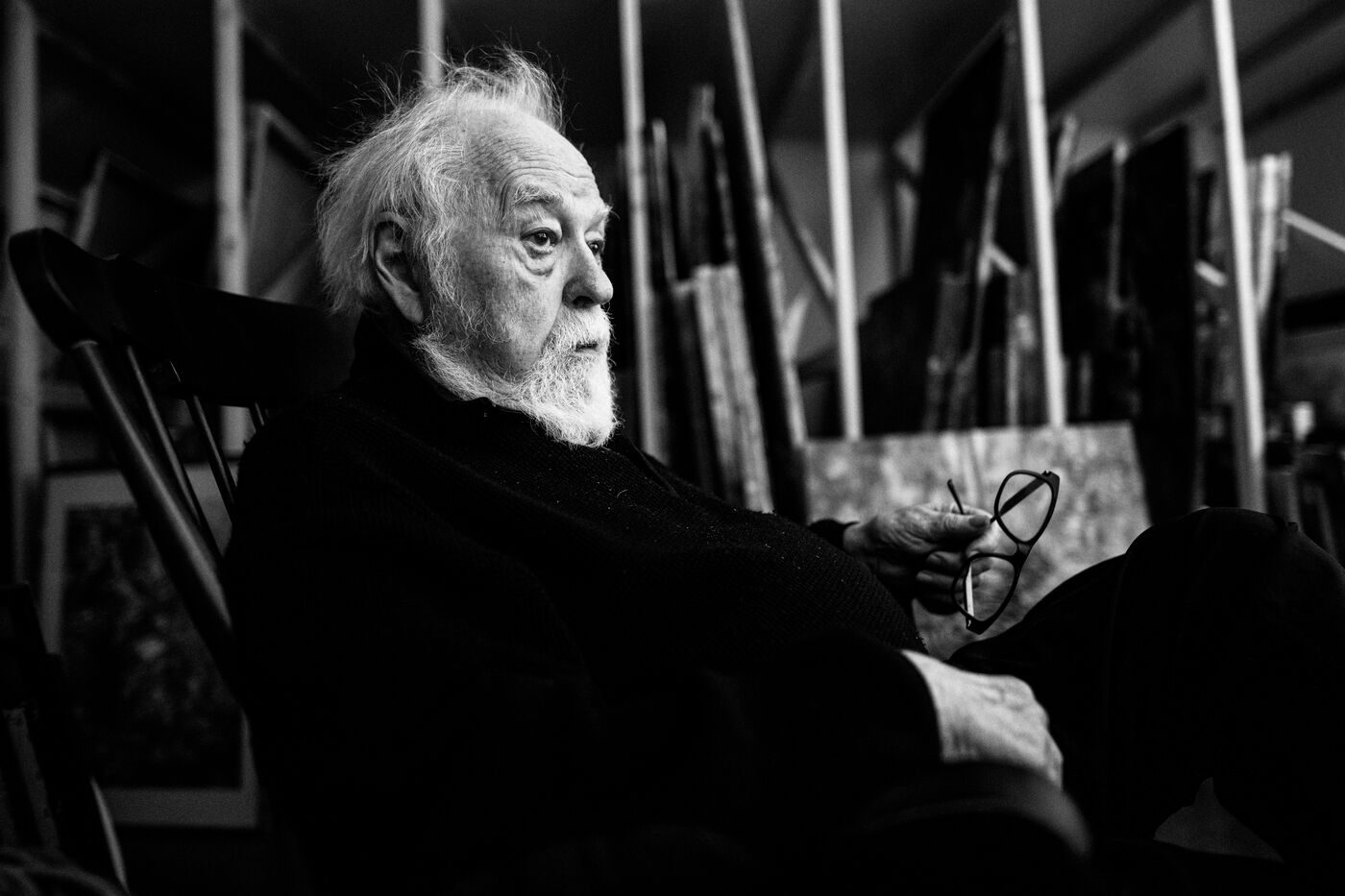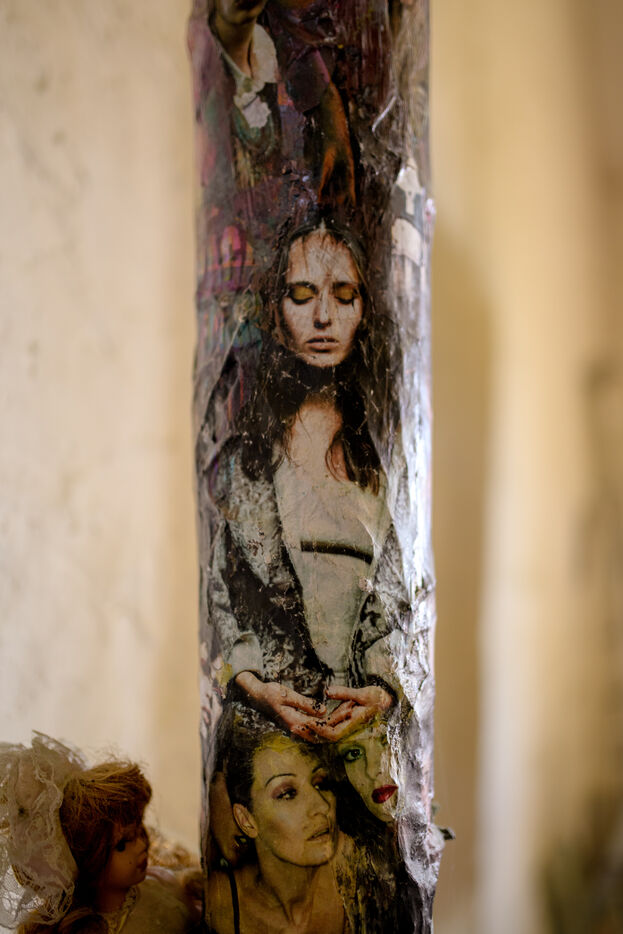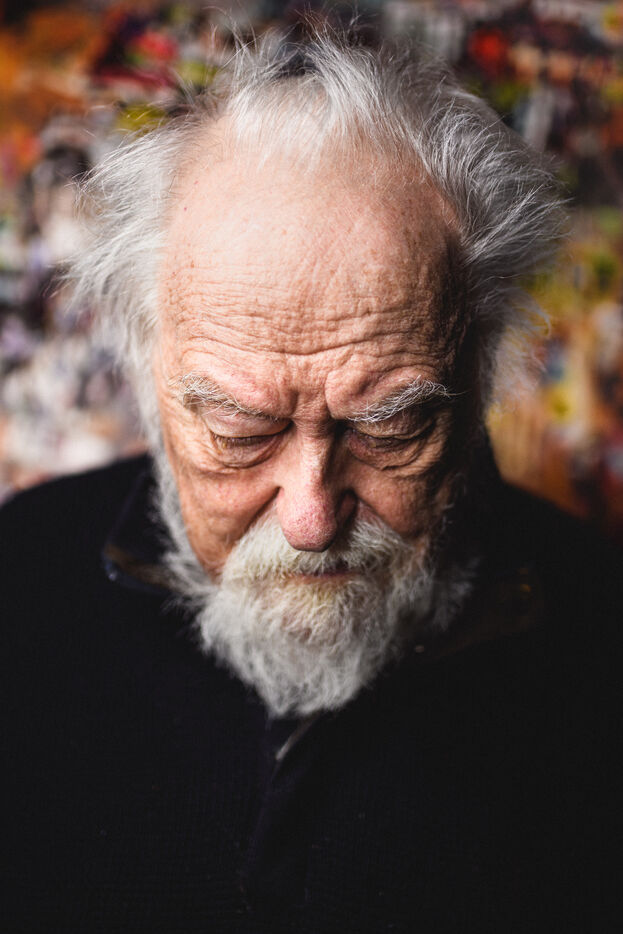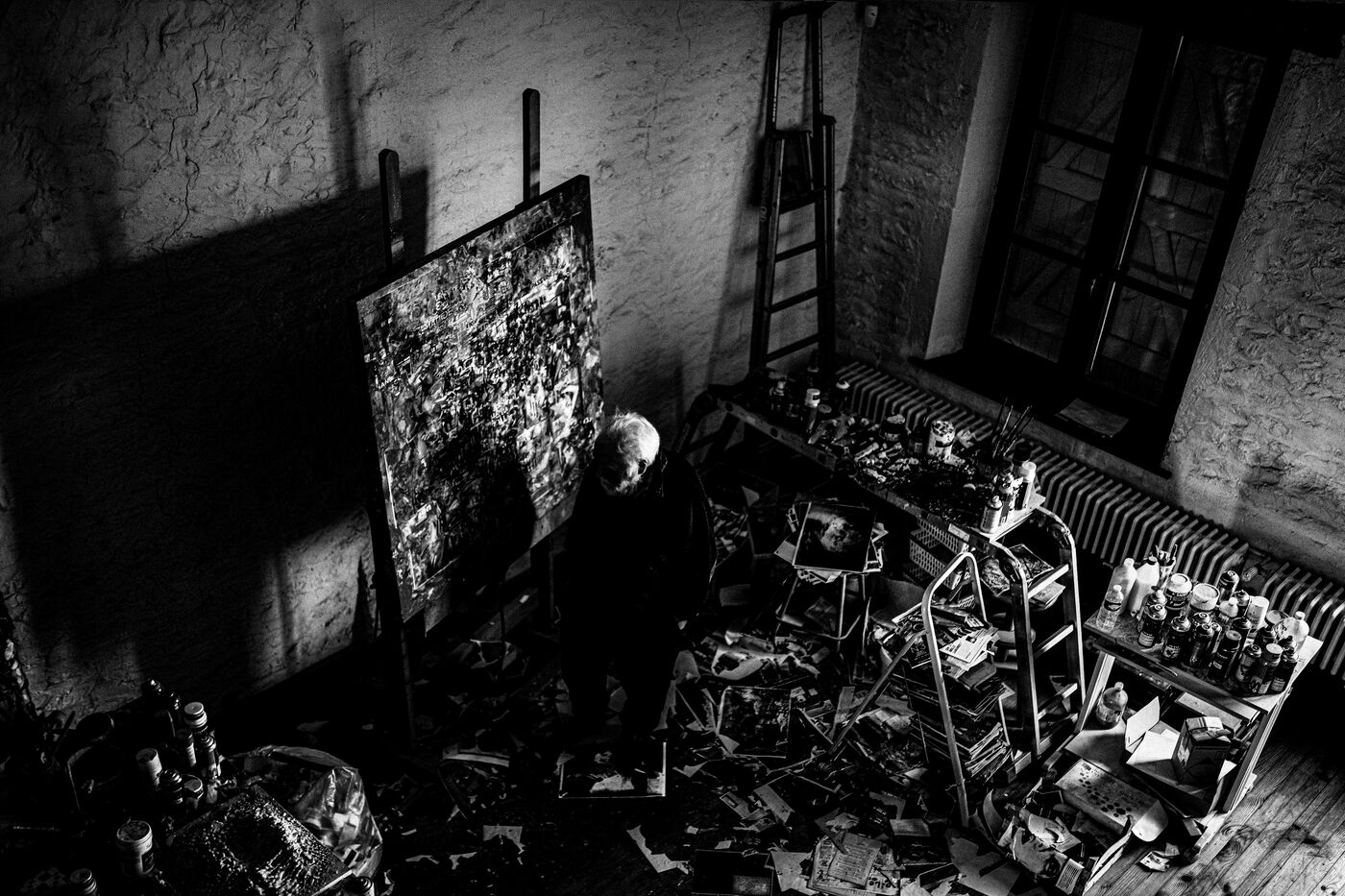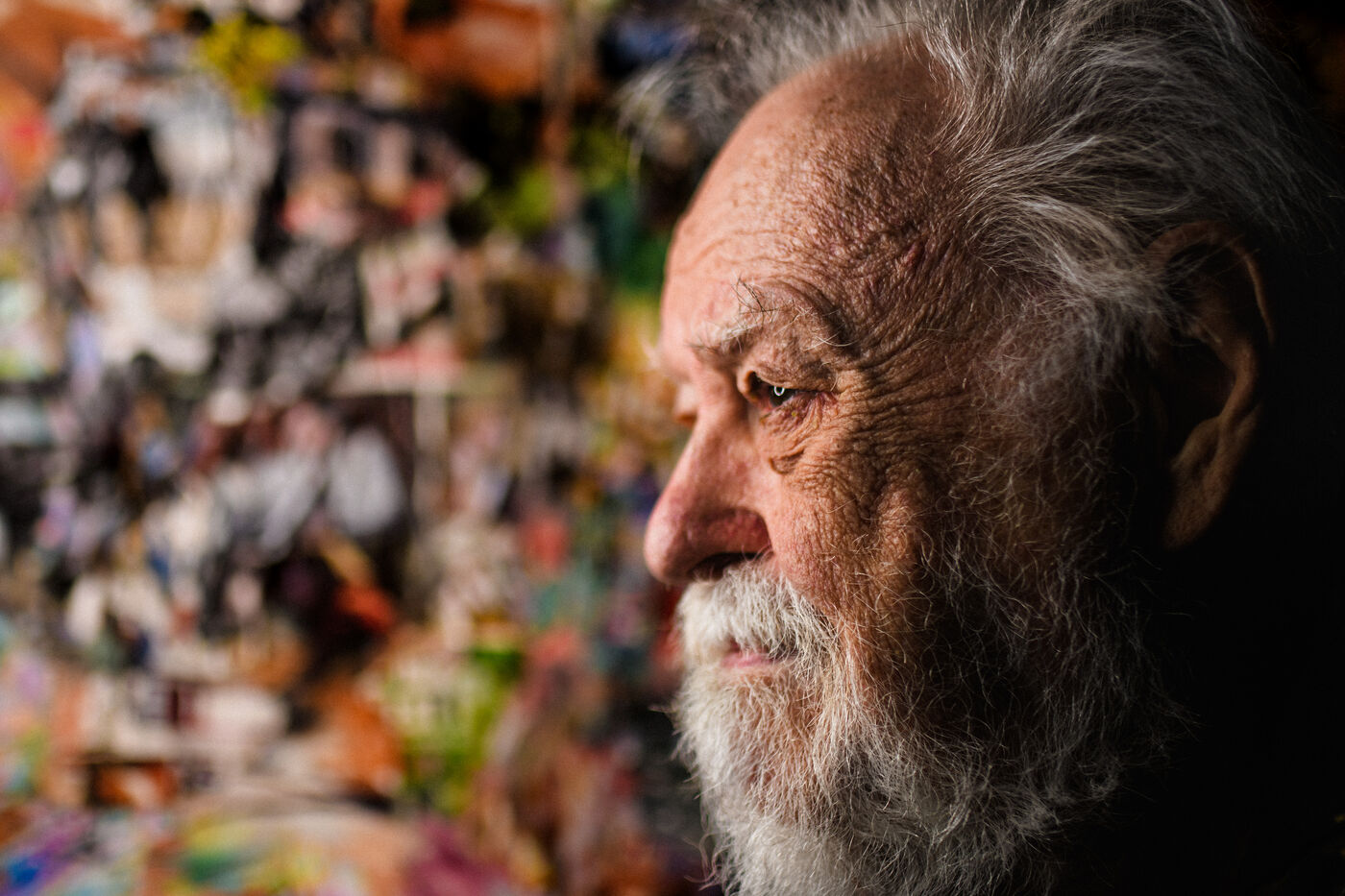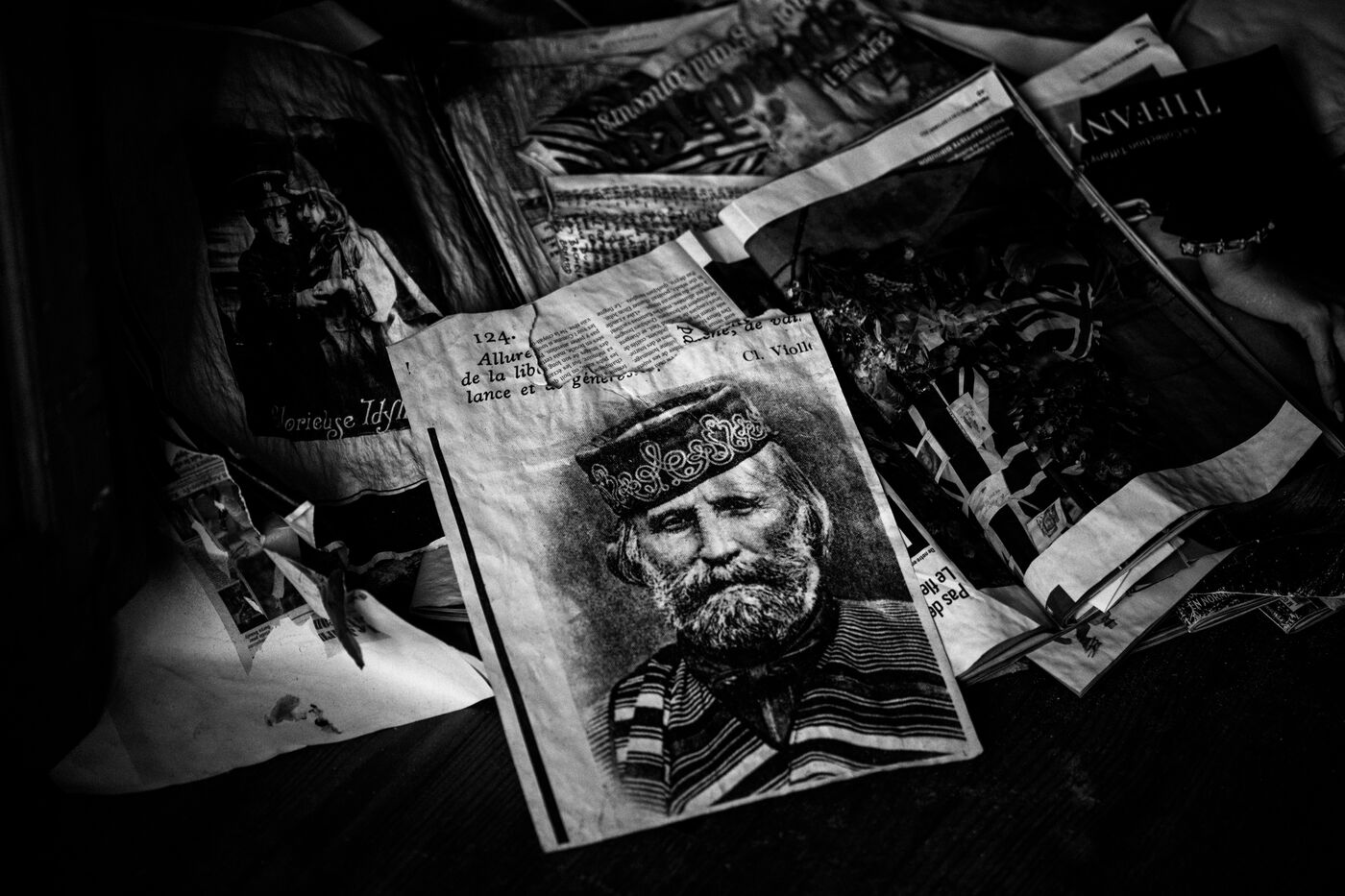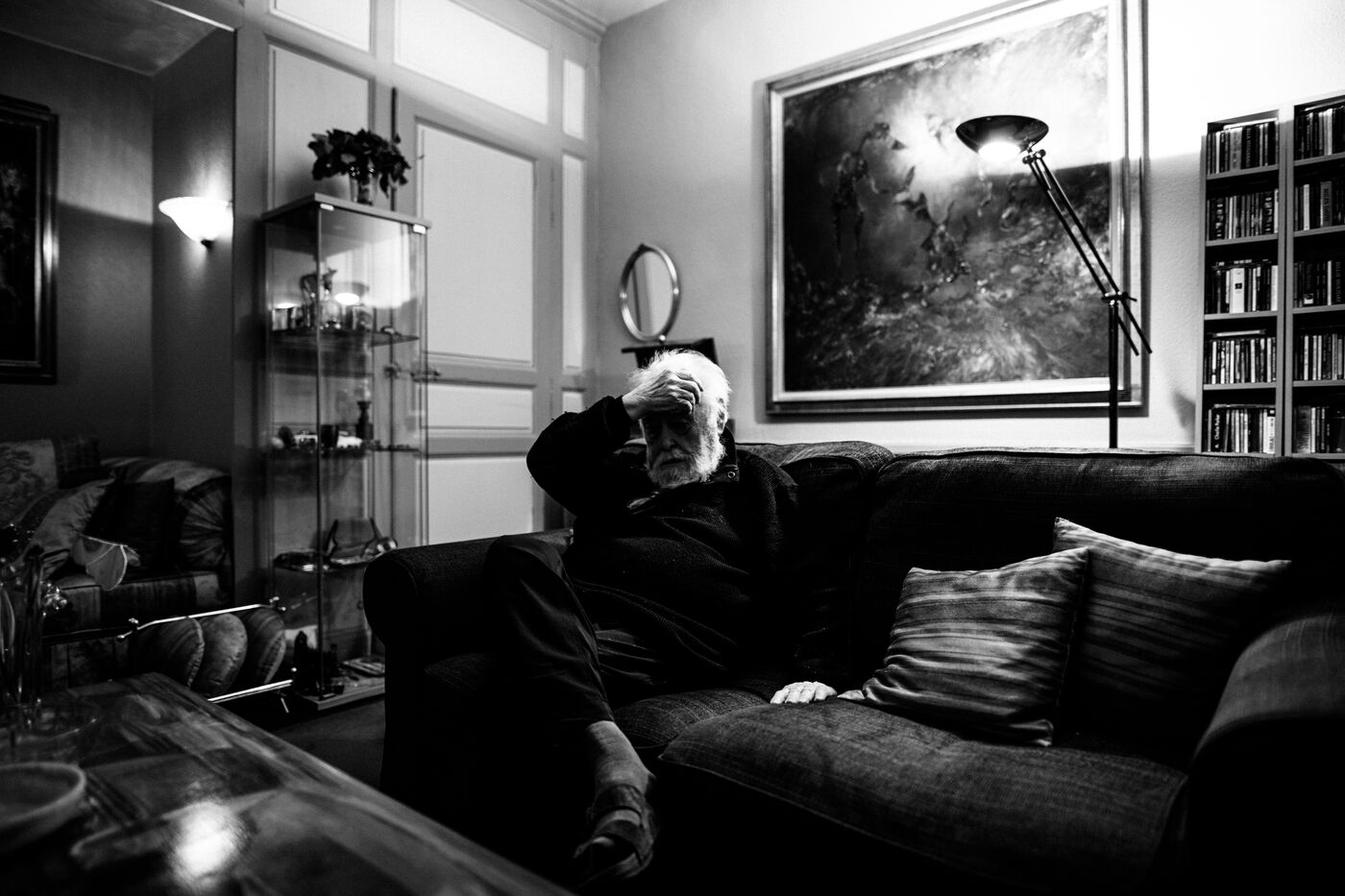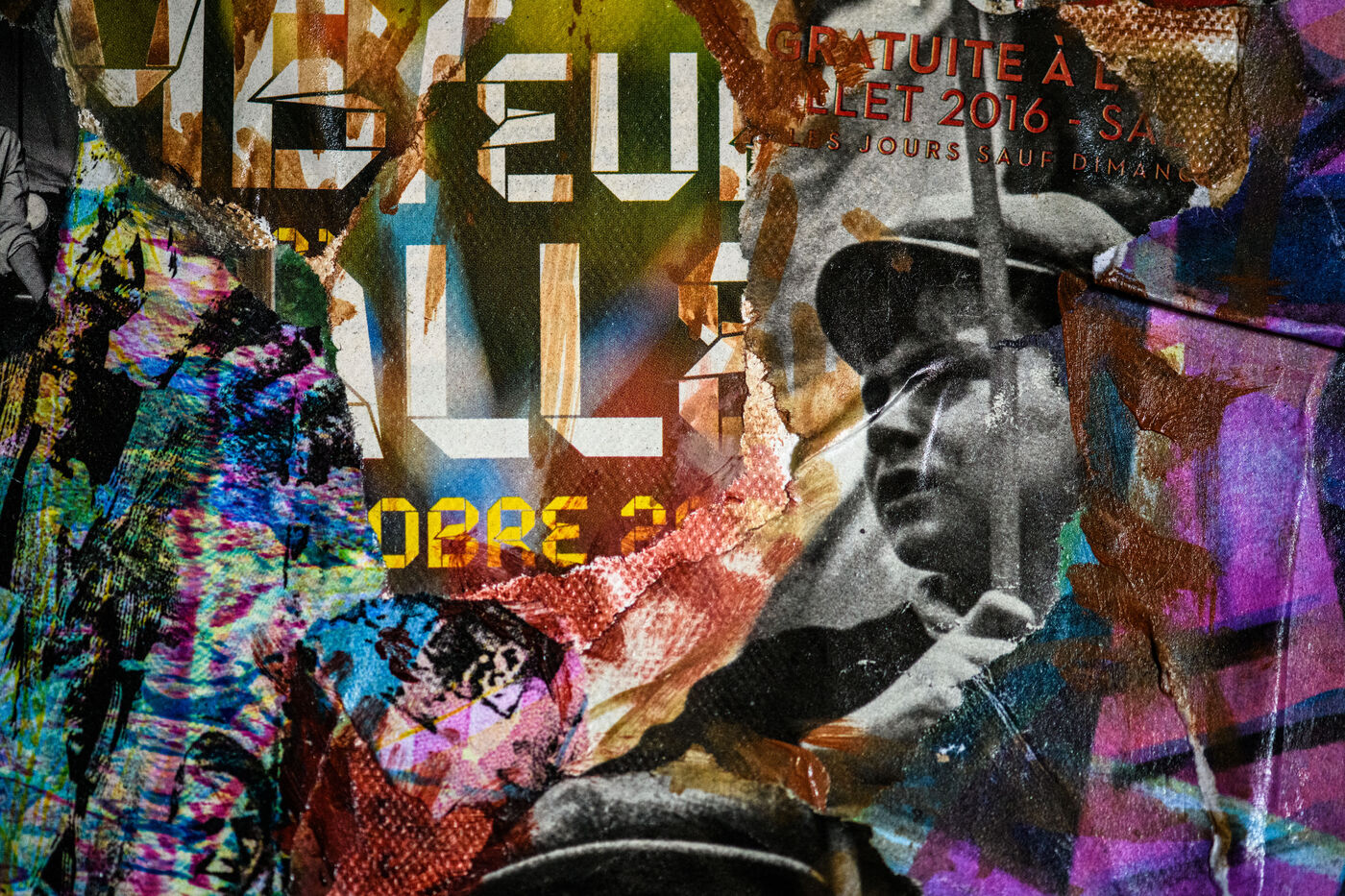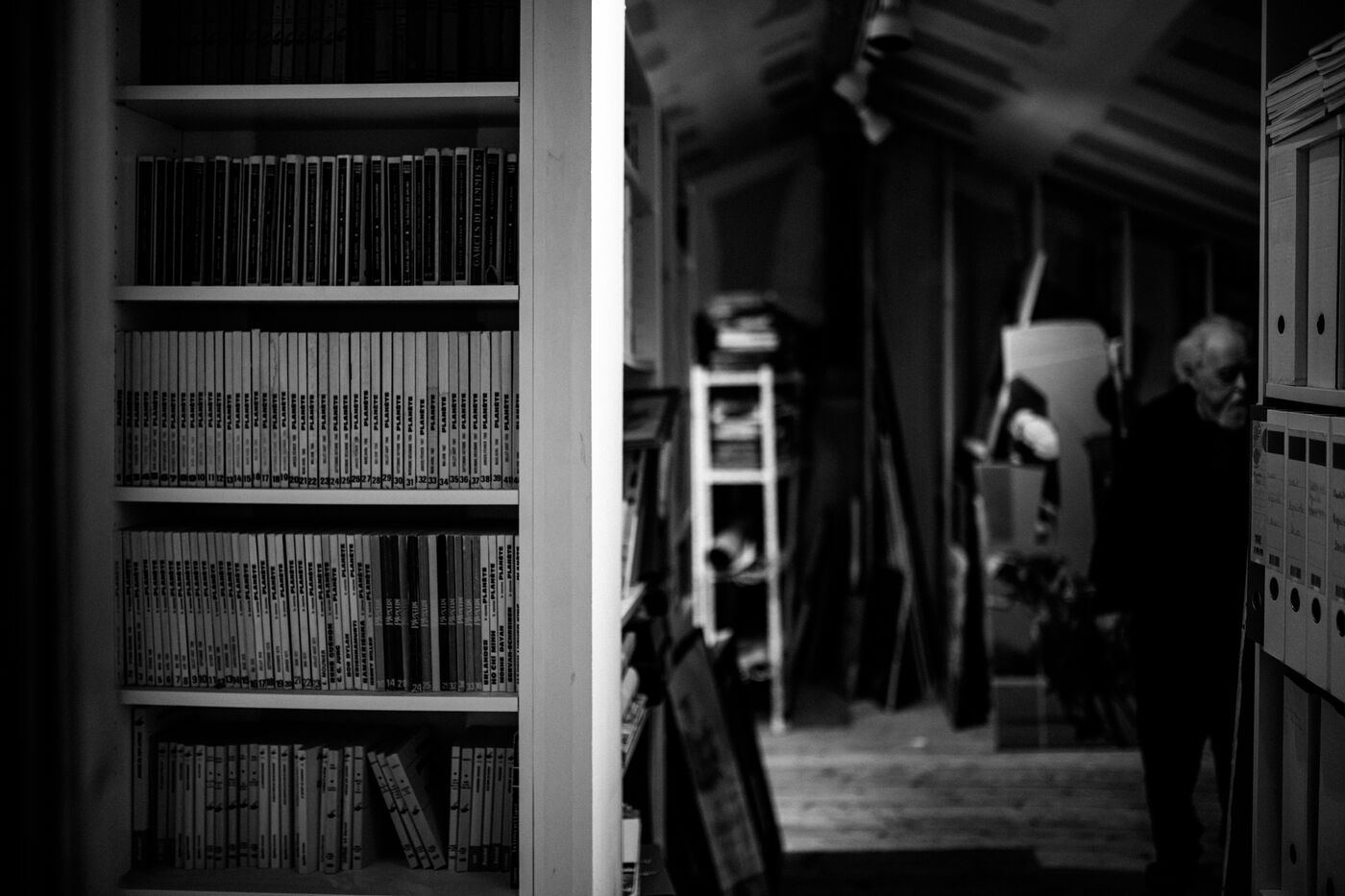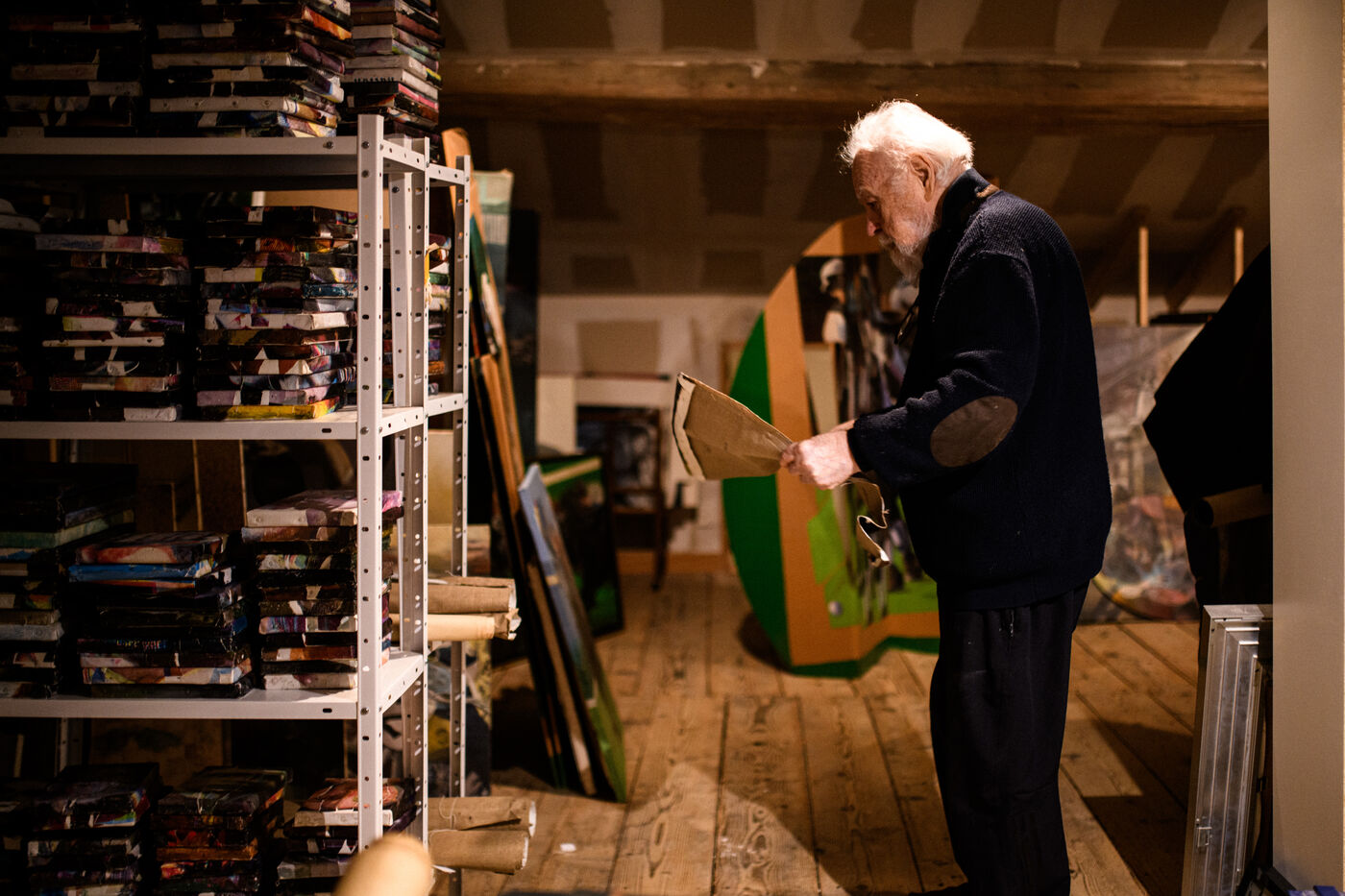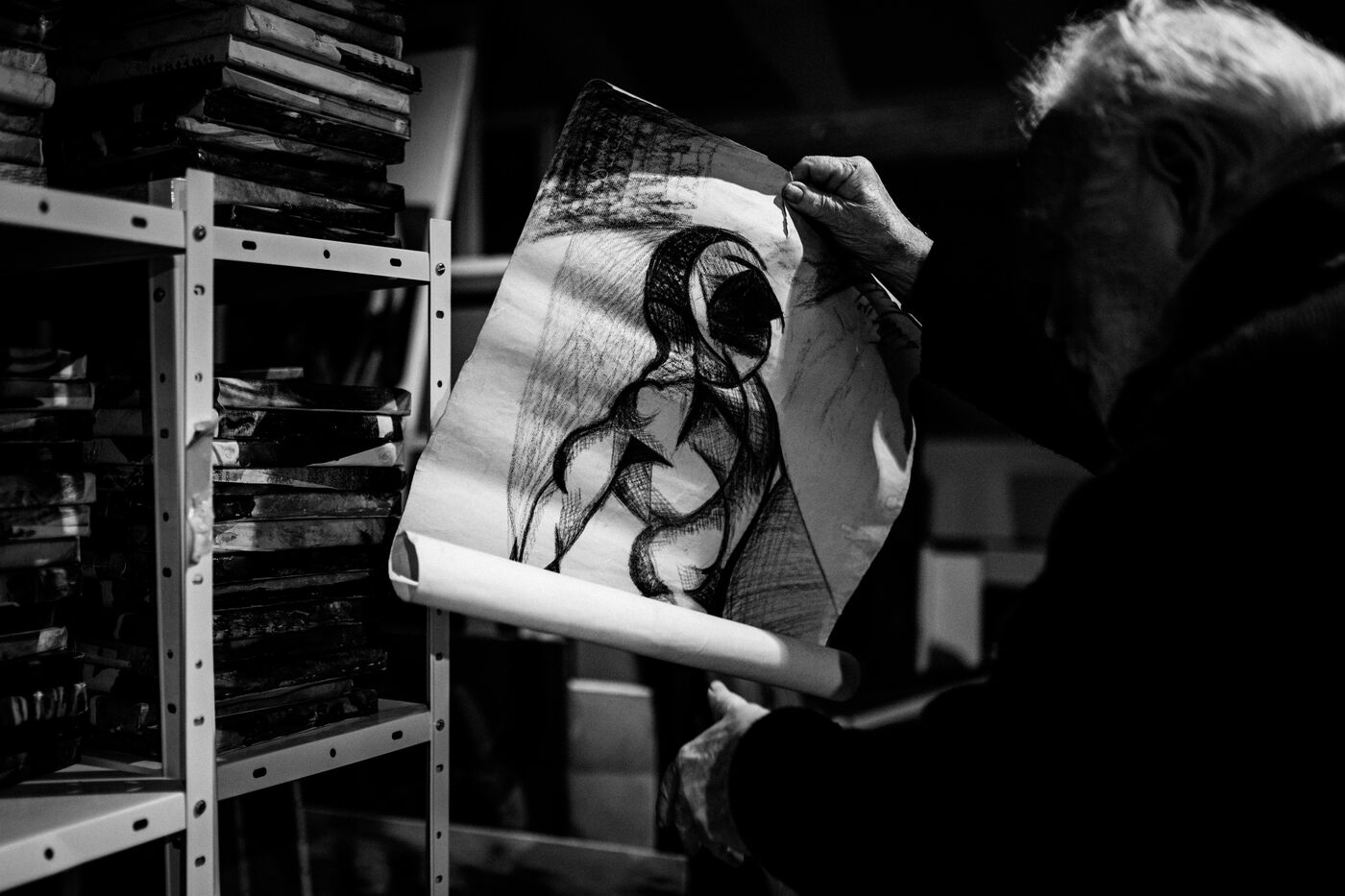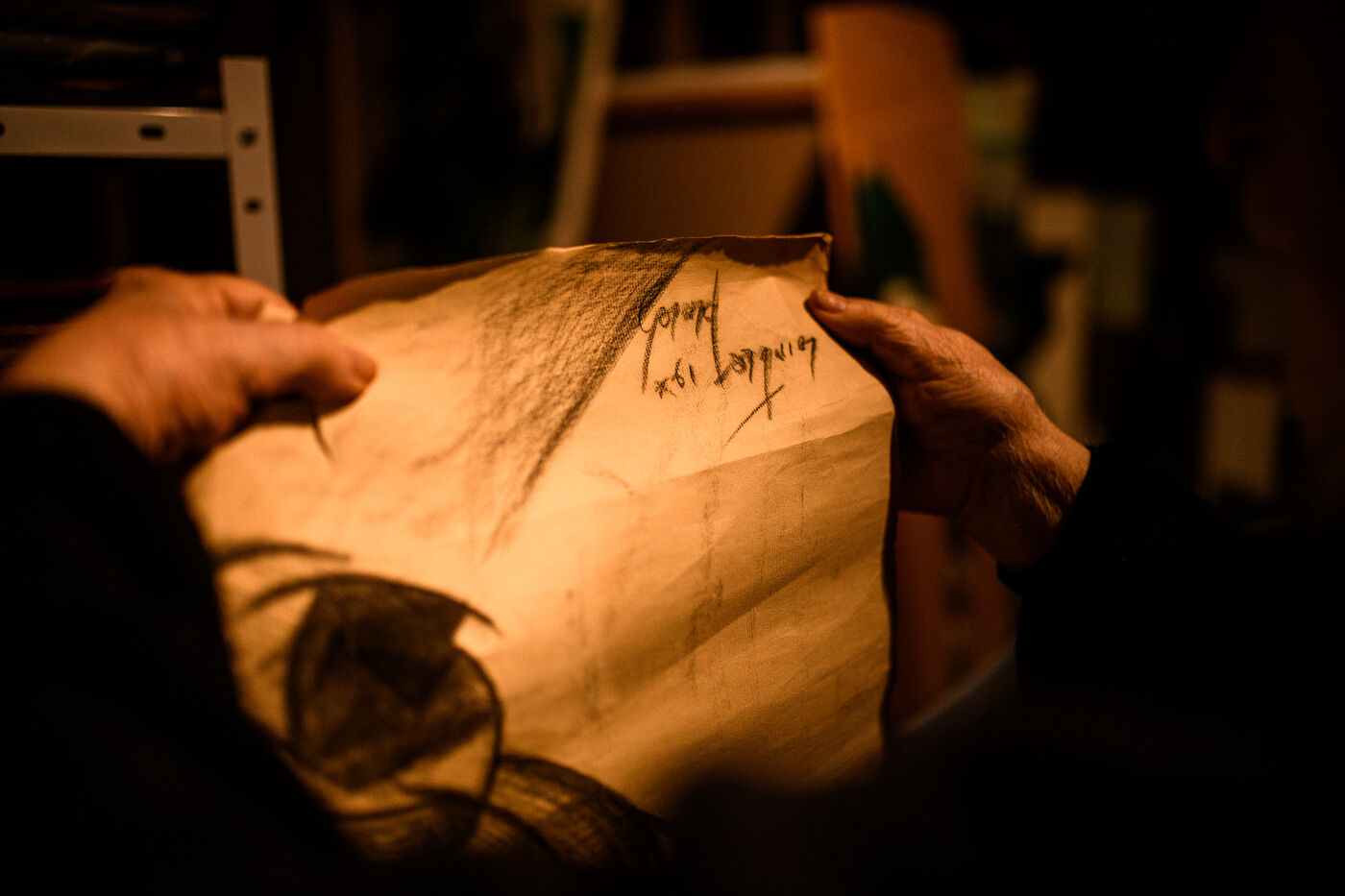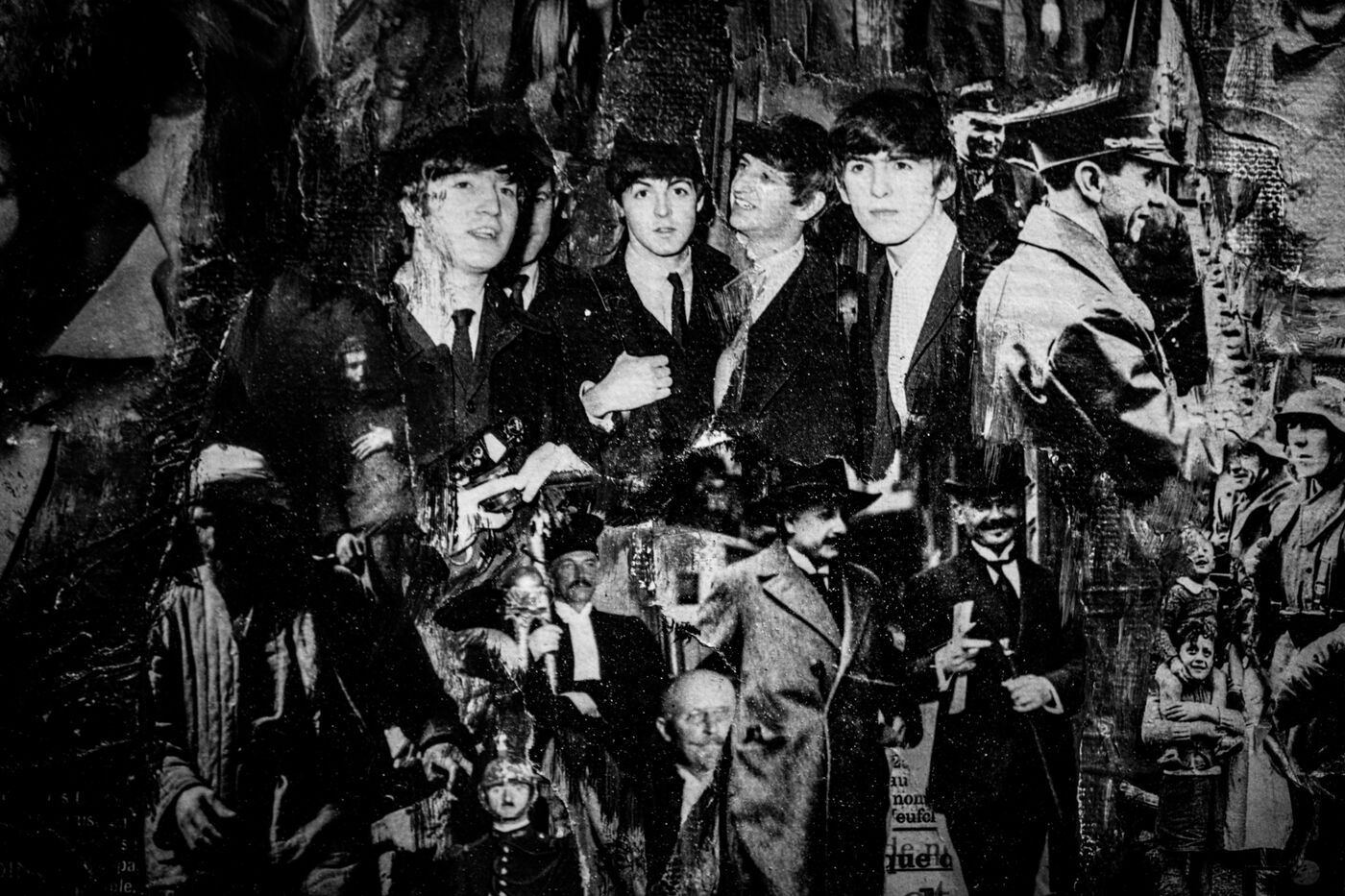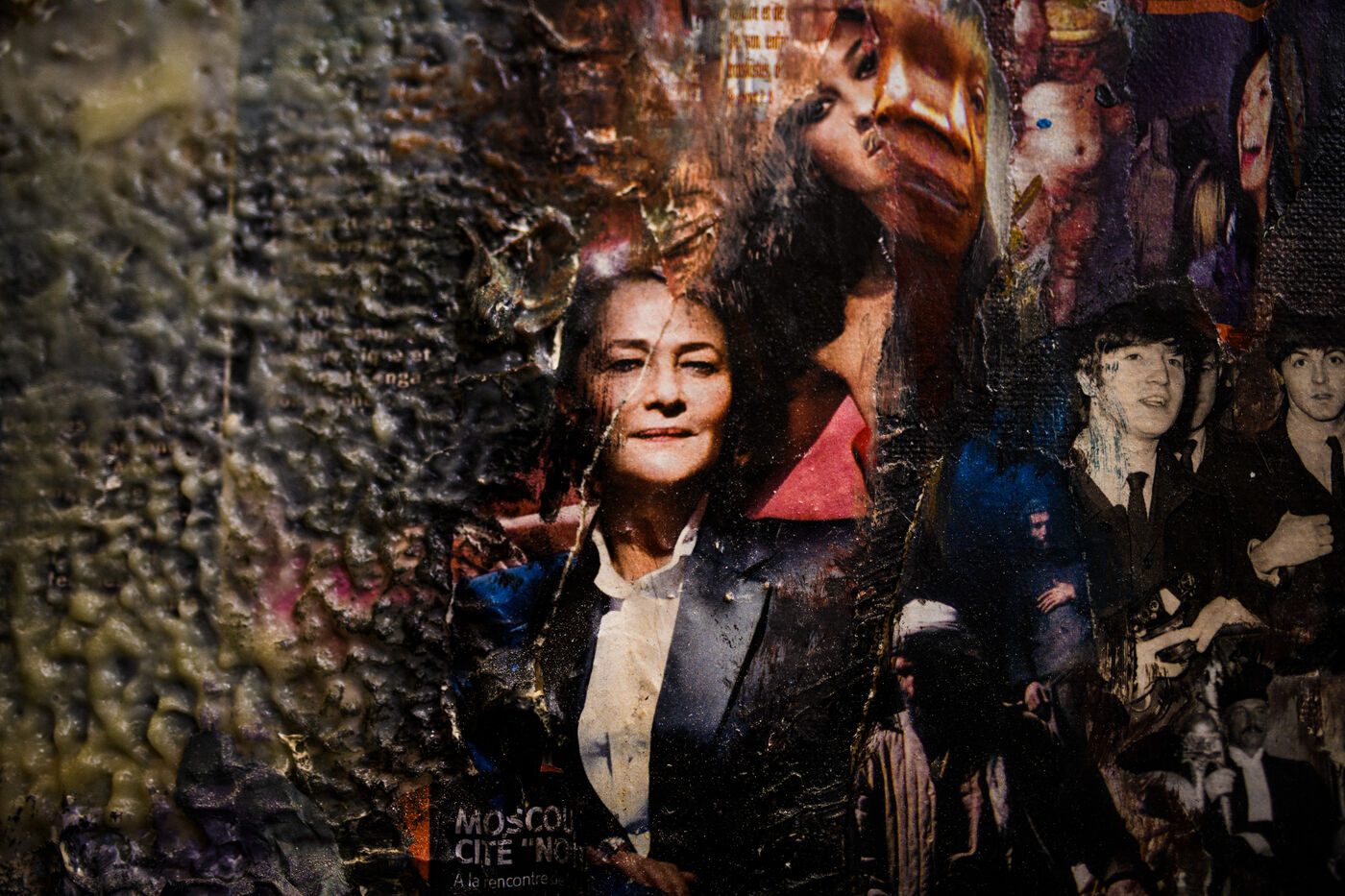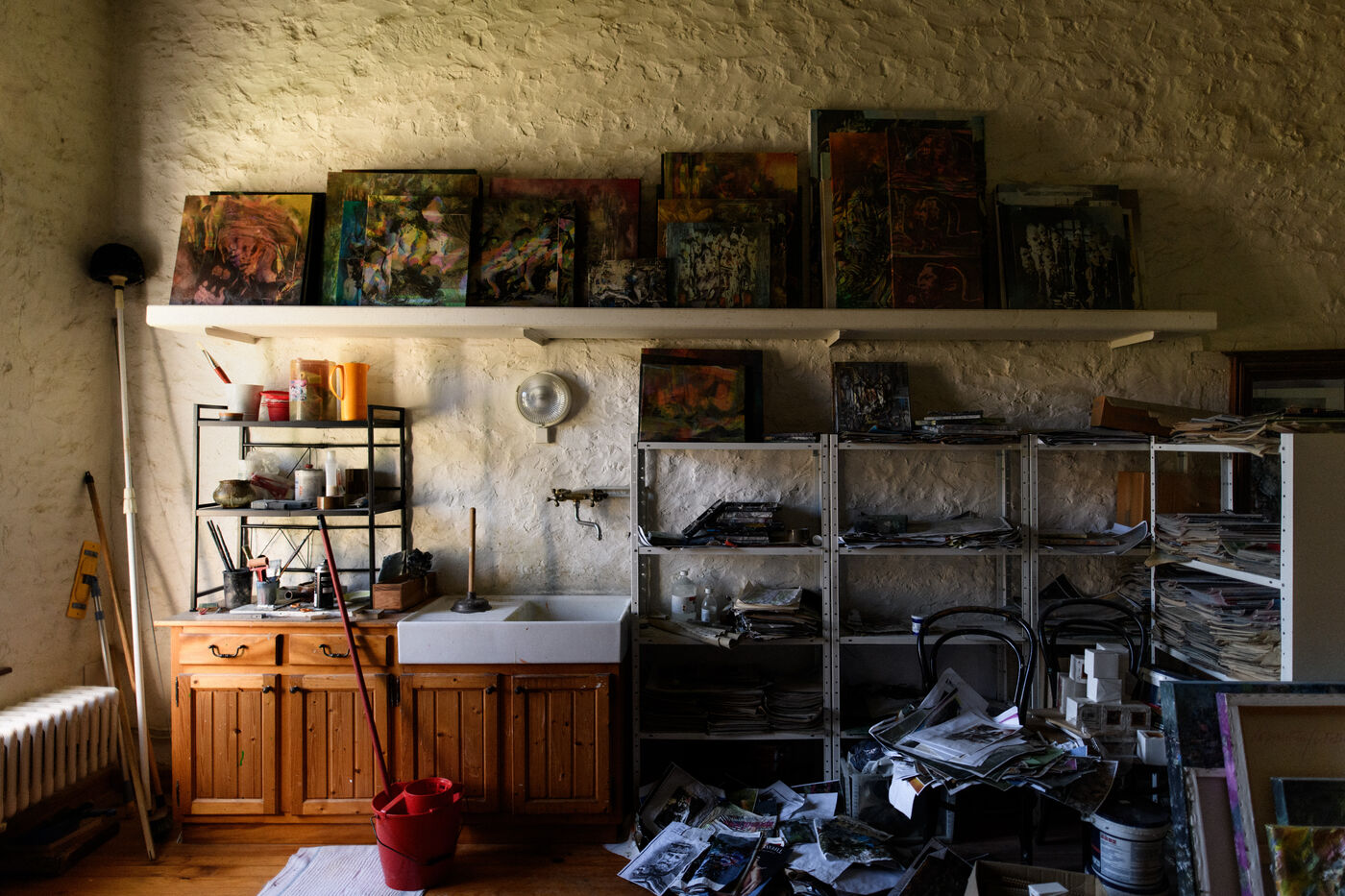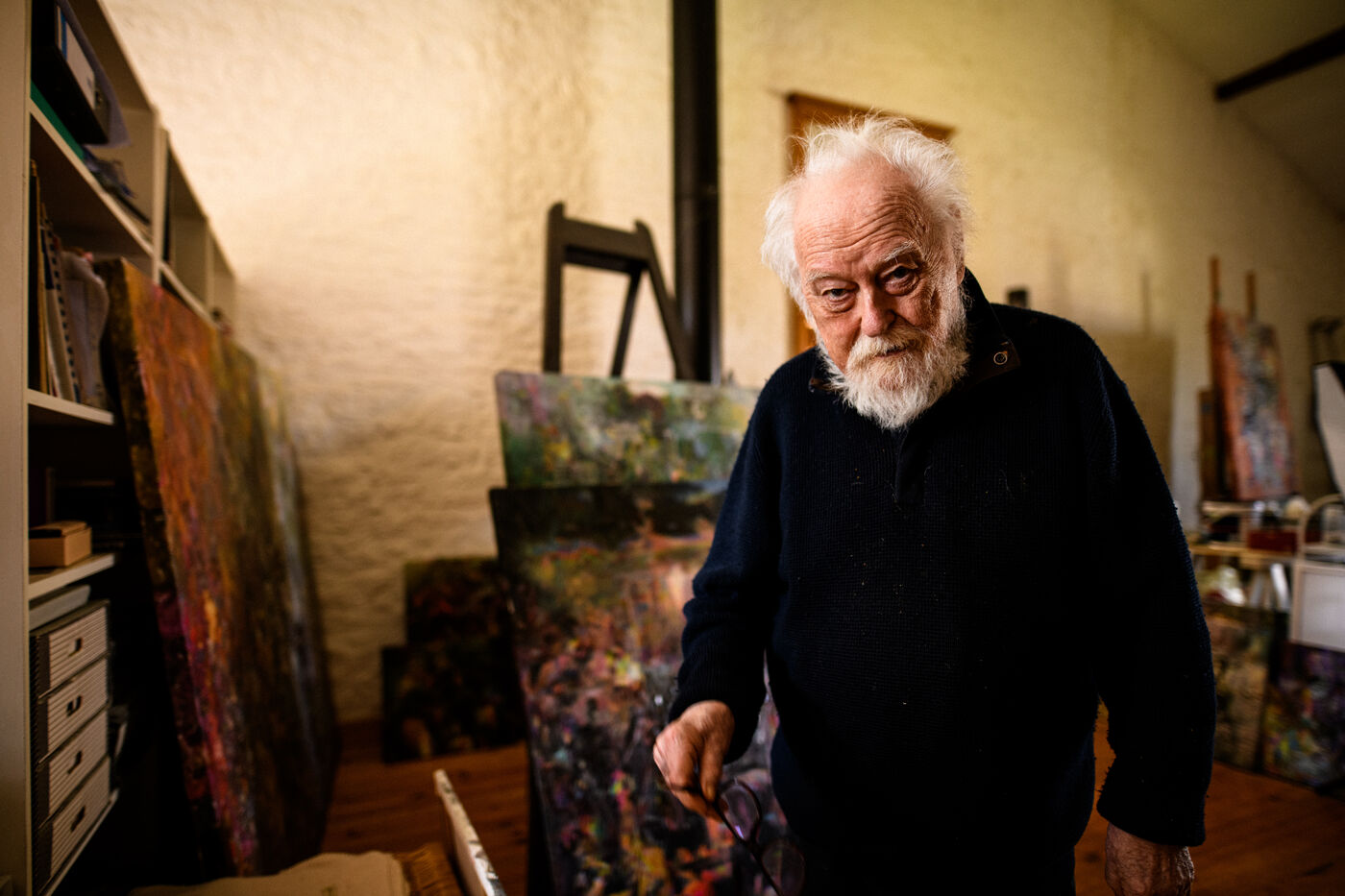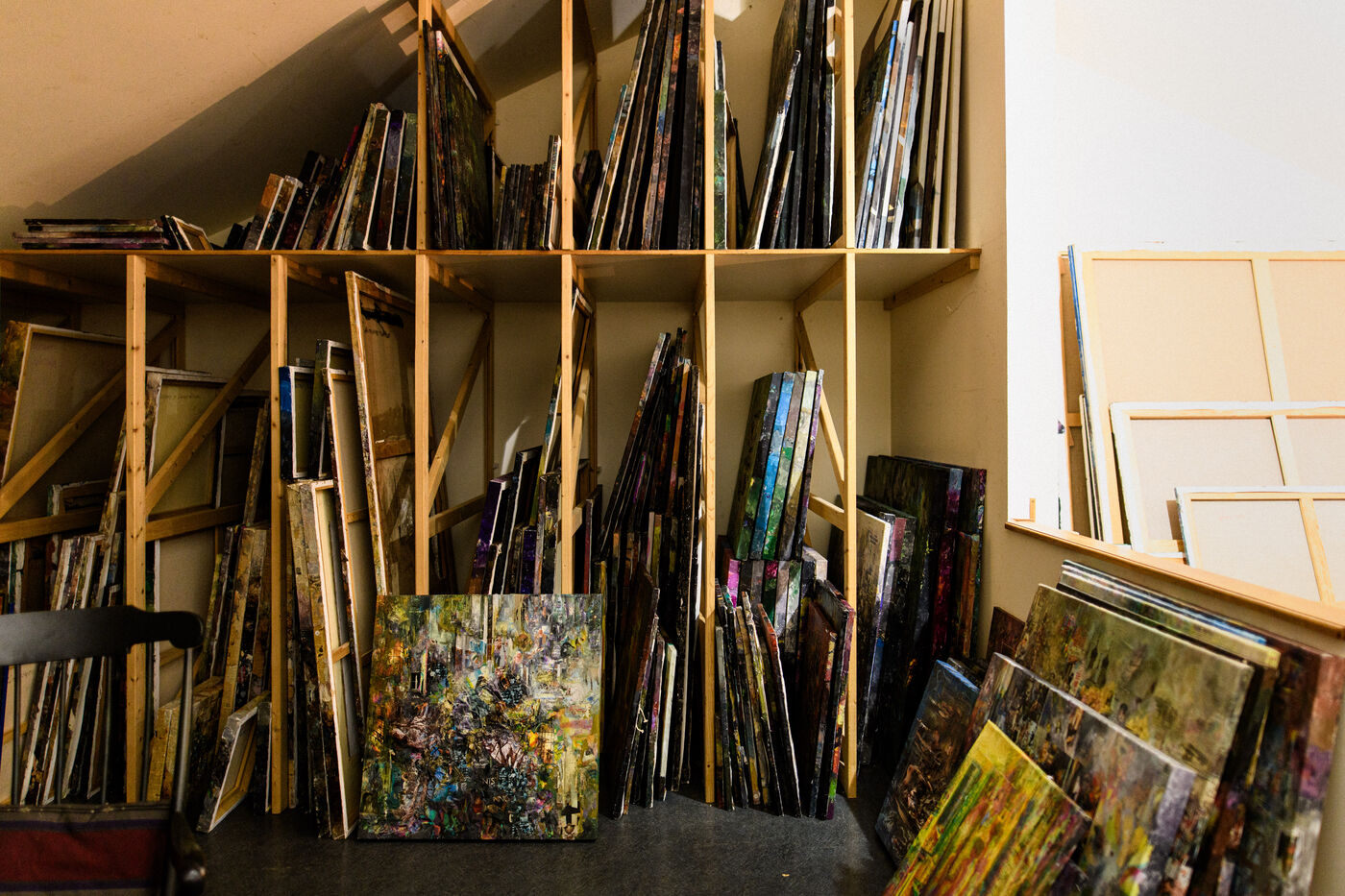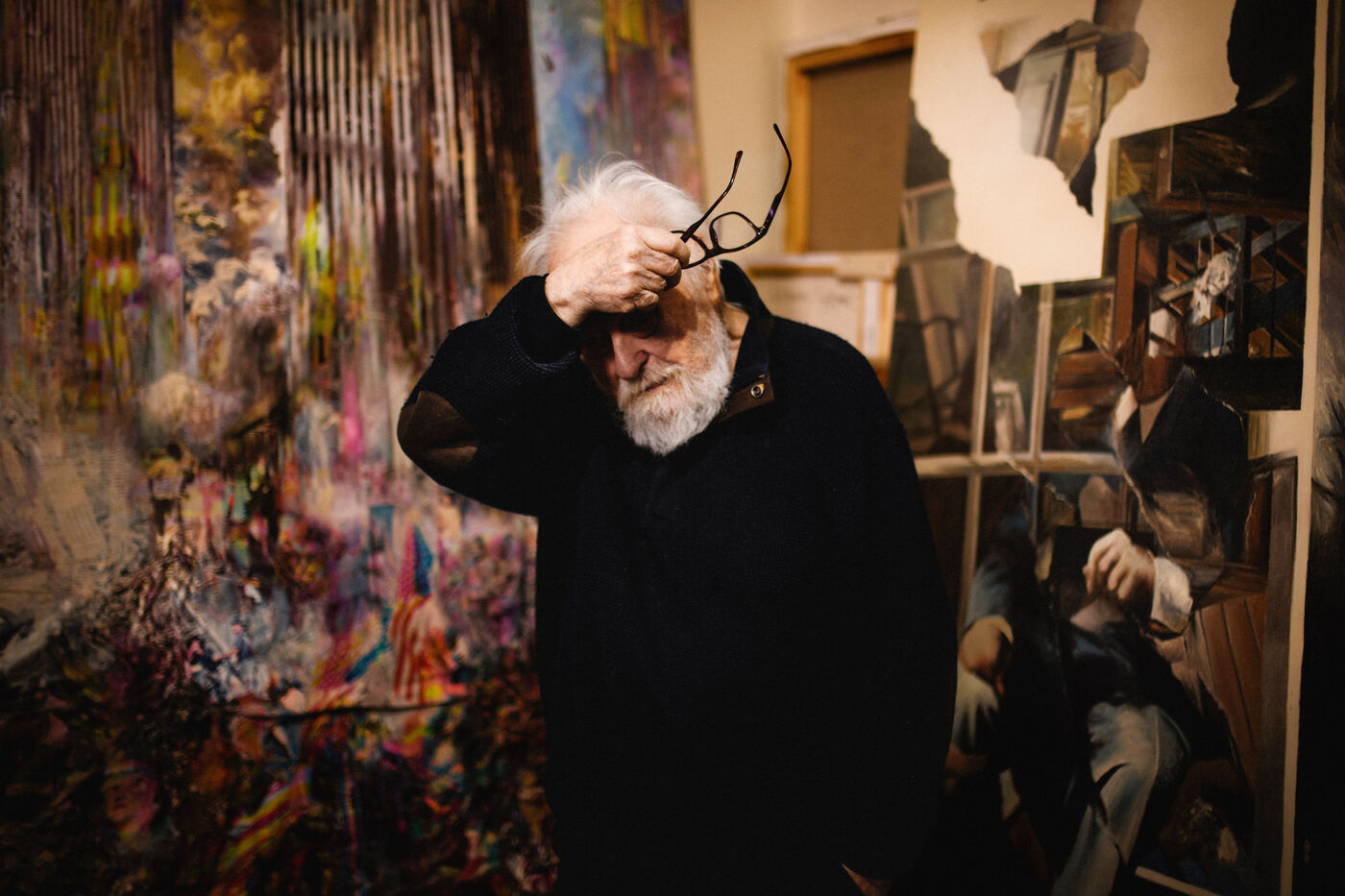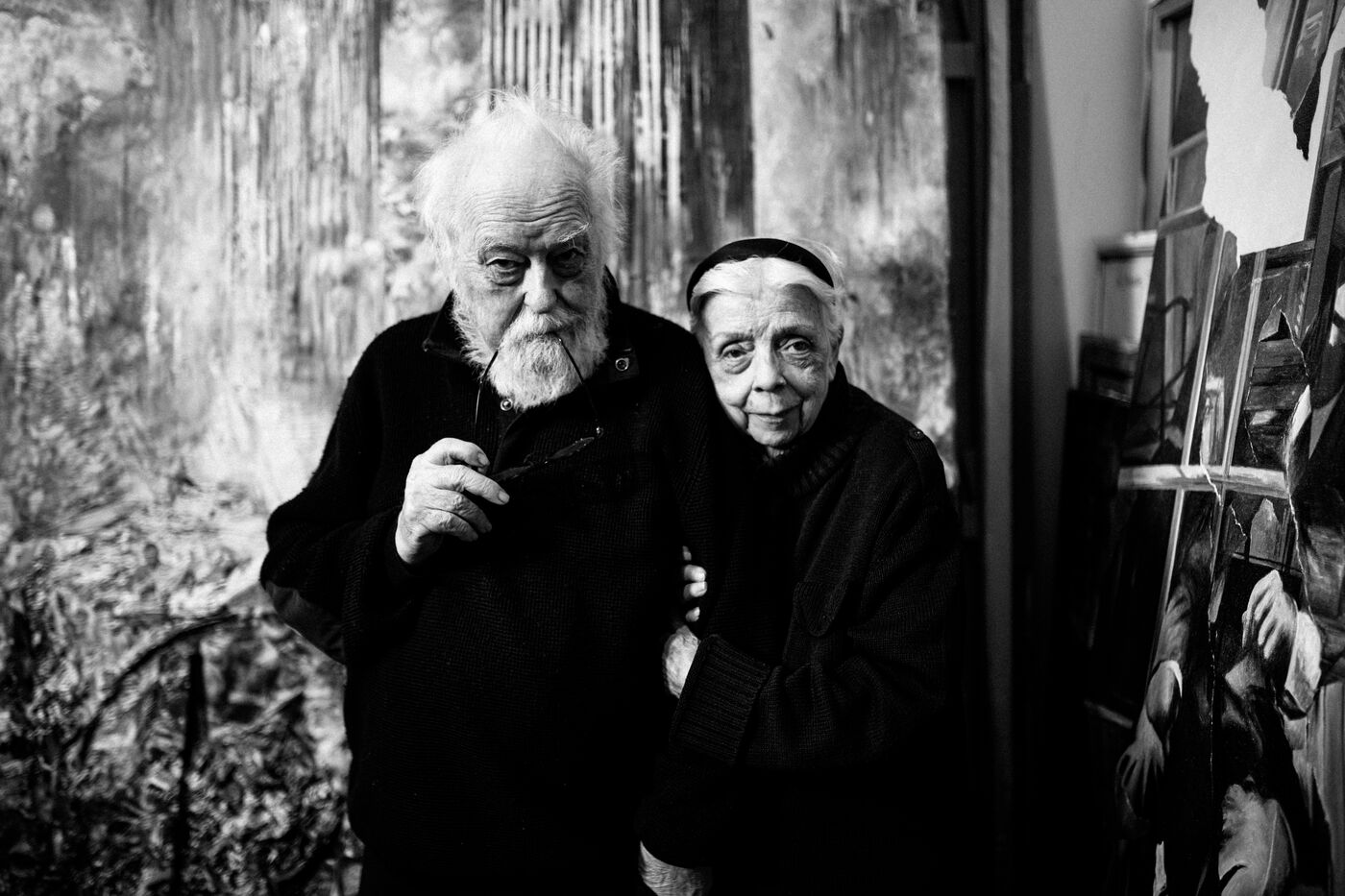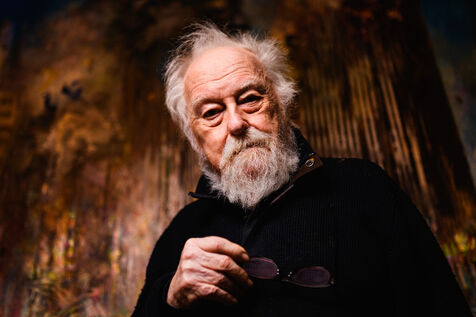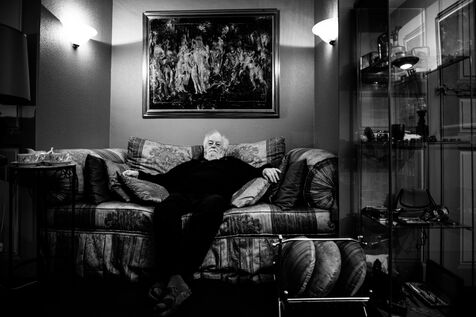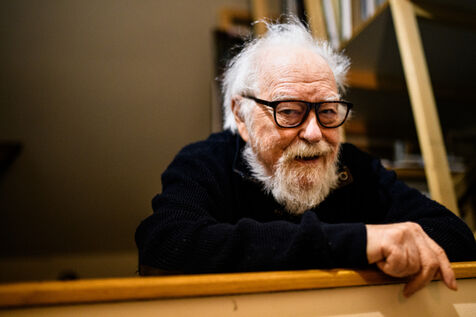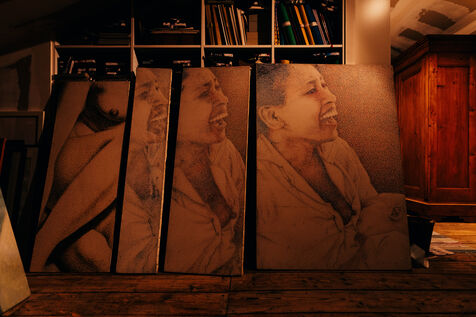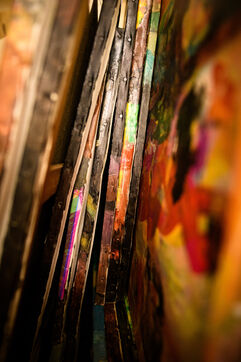Gérard Larguier I de mémoire et de matière
À 87 ans, Gérard Larguier nous ouvre les portes de son presbytère de Bonnet, dans la Meuse. Élève de Paul Colin ( célèbre affichiste et compagnon de Joséphine Baker) il a traversé le siècle, ses mouvements, ses fractures, ses mythes. Il a vécu et travaillé dans son atelier parisien du Bateau Lavoir, dont il vient de rendre les clés. Il a fréquenté Jean Cocteau, Jean Marais, César, ainsi que les milieux germanopratins de l’après-guerre. Exposée dans le monde entier, son œuvre, riche de milliers de toiles, mêle figuration libre, abstraction lyrique, expressionnisme matiériste et symbolisme engagé.
Il ne peint plus depuis trois ans. Son travail exigeait une attention extrême, une minutie harassante. Il a pourtant tenu à conserver son atelier figé, comme une installation vivante. Témoin d’une pratique habitée par tout ce qui traverse un temps.
Ce reportage, en alternance de couleur (pour le présent) et de noir et blanc (pour le passé et l’atemporel), propose une plongée dans son univers : portraits intimes, détails d’atelier, fragments d’œuvres, collages et archives. Il ne voulait plus tout raconter. Plus revenir sur la guerre, le père, les années 60, la lutte de son épouse Michèle— sa « très attachée de presse » — contre la peine de mort, les concerts avec Georgie Viennet, Ferré, Ferrat... Tout cela faisait partie de leur histoire.
Et pourtant, à travers la fatigue du corps, perçait encore la vigueur du regard, l’attrait magnétique pour certains sujets, l’humour, la tendresse, la volonté de laisser trace.
Alors j’ai vu ses yeux qui brillaient.
Ce sujet a été réalisé à l’occasion d’une exposition rétrospective visible à partir du 19 juin 2025, à "La fonte d'Art", à l'abbaye d'Écurey dans le Grand Est.
Gérard Larguier I Memory and Matter
At 87, Gérard Larguier opens the doors of his presbytery in Bonnet, in the Meuse region of France. A student of Paul Colin ( the celebrated poster artist and companion of Joséphine Baker) he has lived through a century of artistic movements, ruptures, and myths. He lived and worked in his studio at the Bateau Lavoir in Paris, a place he has only recently left. He once mingled with Jean Cocteau, Jean Marais, César, and the post-war Saint-Germain-des-Prés artistic milieu. His work, comprising thousands of canvases, has been shown worldwide and blends free figuration, lyrical abstraction, textural expressionism, and engaged symbolism.
He has not painted in three years. The work demands too much attention to detail, exhausting precision. Yet he has preserved his studio intact, like a living installation, a testimony to a practice shaped by time and its traces.
This photo essay, alternating between color (for the present) and black and white (for the past and the timeless), offers an intimate immersion into his universe: portraits, studio details, fragments of artworks, collages, and archives. He no longer wished to recount everything — the war, his father, the sixties, or the fight led by his wife, still his “very dedicated press officer,” against the death penalty. The concerts with Georgie Viennet, Ferré, Ferrat... All of it belonged to their shared past.
And yet, through the weariness of the body, the spark of the gaze remained — drawn still to certain subjects, carrying humor, tenderness, and the quiet determination to leave a trace.
That’s when I saw his eyes shine.
This series was produced ahead of a retrospective exhibition planned for June 2025 in the Grand Est region of France.
